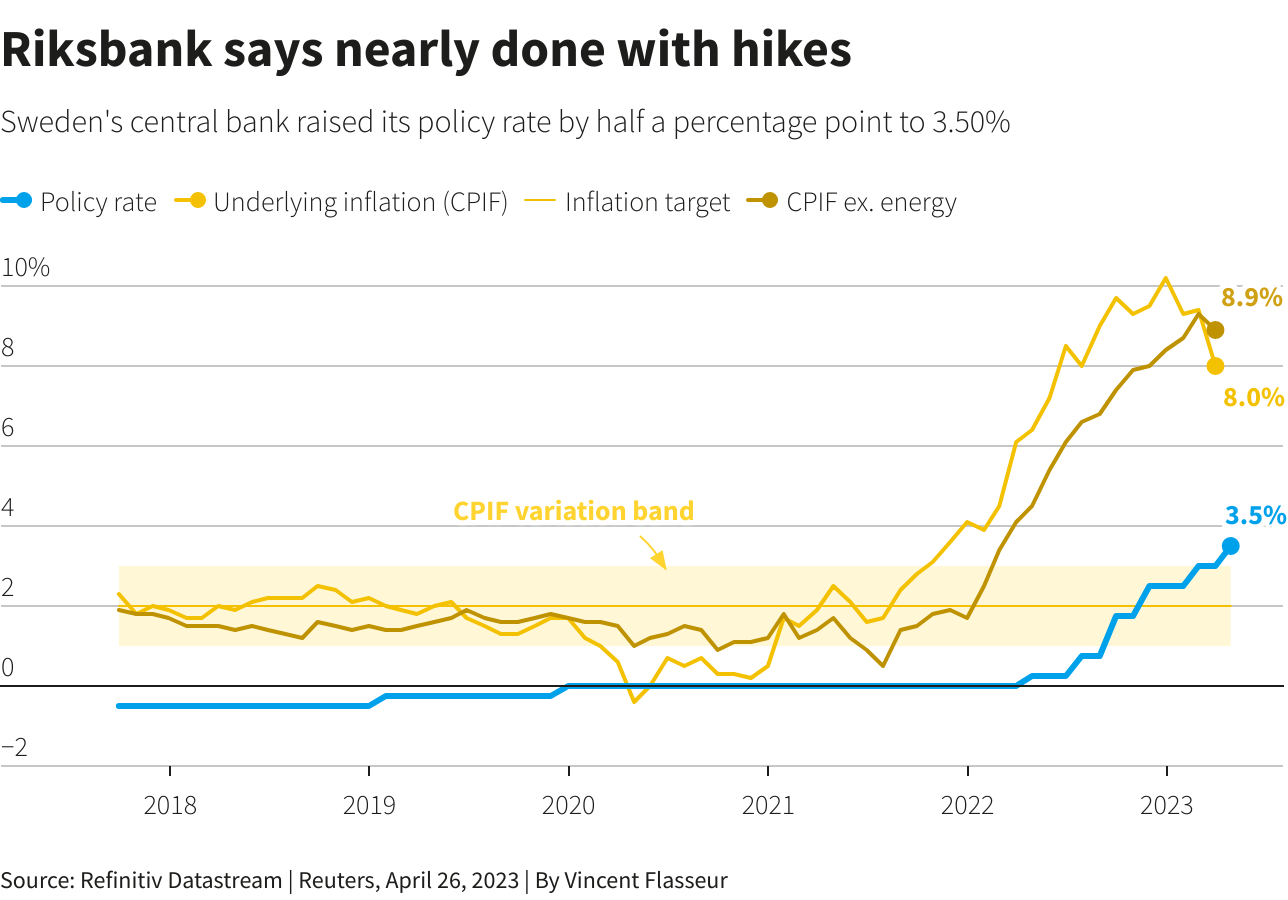SINGAPORE -- The dollar retreated on Wednesday on fresh signs of a U.S. slowdown after orders for core capital goods fell more than expected in March, while the economic outlook for Europe could surprise to the upside and strengthen the euro.
The Swedish crown weakened sharply after the country's central bank was less hawkish than expected, while the euro rebounded 0.6% from losses on Tuesday when jitters over U.S. banks buoyed the safe-haven dollar.
The dollar index , which measures the currency against six major rivals, fell 0.354% as new orders for key U.S.-manufactured capital goods fell more than expected last month, the Commerce Department said.
Unfilled orders continued a steady decline, indicating there was less in the pipeline to drive activity and that business spending on equipment was likely a drag on first-quarter growth.
Meanwhile, Germany raised its economic forecast for growth this year to 0.4% from a previously predicted 0.2%, according to government spring economic projections published on Wednesday.
"Europe is taking a lot of people by surprise," said Ed Moya, senior market analyst at OANDA in New York. "There's still a lot of risks for their economy, their outlook. But this is still a market that is rather stunned by what we're getting out of Europe."
Driving the dollar versus major currencies are early signs of a U.S. slowdown and decelerating inflation that will be greater than other economies, said Thierry Wizman, global FX & interest rates strategist at Macquarie in New York.
"Whatever slowdown we're going to see in the U.S. is going to come earlier and it's going to be more intense, at least in its early stages, than whatever we're going to see coming out of the rest of the world," Wizman said.
|
|
| Graphics: Reuters |
"The disinflation that we're seeing or going to see in the U.S. in final goods and services prices, is going to be more intense, more significant, than whatever disinflation that we get in the rest of the world," he said.
Manufacturing, which accounts for 11.3% of the U.S. economy, is reeling from the Federal Reserve's fastest interest rate hiking campaign in four decades.
The Fed is expected to hike rates by 25 basis points when policymakers conclude a two-day meeting on May 3, and then will likely pause its rate hike campaign.
But the market expects further rate hikes from the European Central Bank, a difference with the U.S. central bank that is driving currency moves.
Sweden's central bank raised its policy rate by half a percentage point to 3.50% in line with market forecasts, and said it expected a further hike at its meeting in June or in September, but two deputy governors voted for a smaller hike.
The euro rose 1.05% against the crown to a high of 11.426, set for its biggest one-day gain since early March. The dollar, which traded down 0.7% against the crown before the Riksbank's decision, rose 0.90% to 10.337.
Sterling was last trading at $1.2457, up 0.39% on the day, while the yen strengthened 0.13% at 133.52 per dollar.
Investor attention will firmly be on the slate of central bank meetings in the next few weeks with the Bank of Japan, under the new Governor Kazuo Ueda, holding its policy meeting later this week.
Currency bid prices at 2:58 p.m. (1858 GMT)






















































